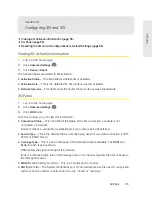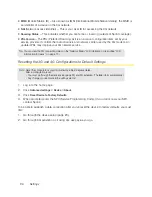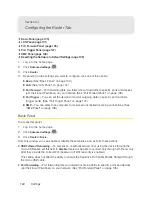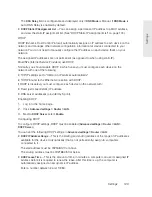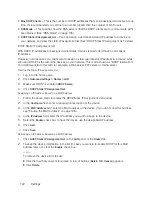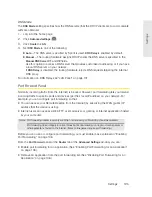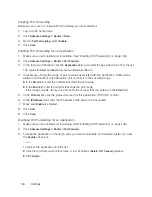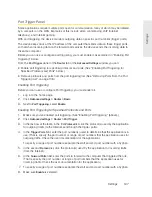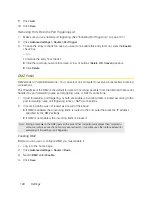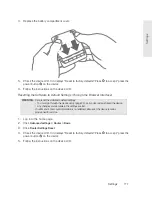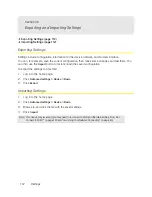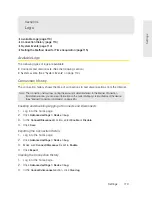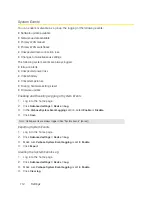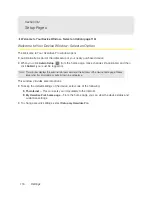
102 Settings
From this window, you can view or adjust these settings, or perform the following actions:
●
Router IP Address
— This is the routing hardware’s IP address on the LAN.
●
Subnet Mask
— This is the routing hardware’s internal LAN subnet mask.
●
Hostname
— This is, in essence, a name you’re giving the device. (See “Host Name (Device Name)”
on page 93.)
●
Link SSID and Hostname
— With this feature you only need to remember one name when selecting
the Wi-Fi network, accessing the browser interface, or accessing the microSD card. (See “Linking
the SSID and the Host Name” on page 88.)
●
SSID
— This is the name of the Wi-Fi network. (See “SSID (Wi-Fi Network Name)” on page 87.)
●
MTU Mode
— This specifies whether optimization is used.
䡲
Auto
— Optimization is not used.
䡲
Optimized
— Optimization is used; this may improve data transmission.
●
DHCP Server
— This field enables DHCP.
Note:
The following settings are displayed only when DHCP is enabled.
●
DHCP IP Address Range
— This specifies the starting and ending address of the range of IP
addresses available for the device to dynamically (that is, not permanently) assign to computers
connected to it.
●
DHCP Lease Time
— This is the amount of time, in minutes, a computer can use its assigned IP
address before it is required to renew the lease. After this time is up, the computer is automatically
assigned a new dynamic IP address.
Enter a number between 2 and 10080.
●
Max DHCP Clients
— This is the number of DHCP addresses that can be assigned and active at one
time. It’s recommended you set this to a number greater than the number of Wi-Fi users.
●
DNS Mode
— This specifies how the DNS servers (that the DHCP clients are to communicate with)
are obtained.
䡲
Auto
— The DNS server specified by Sprint is used.
DNS Relay
is enabled by default.
䡲
Manual
— The routing hardware assigns DHCP clients the DNS servers specified in the
Manual
DNS Server #1
and
#2
fields.
Use this option to access a DNS server that provides customized addressing or if you have a
local DNS server on your network.
If
DNS Relay
is disabled, the routing hardware rejects DNS requests targeting the internal
DNS proxy.
●
Manual DNS Server #1
and
#2
— These are the static IP addresses to use for the DNS servers (if
DNS Mode
is Manual); available only if
DNS Mode
is Manual.
●
DNS Relay
— If enabled, and if
DNS Mode
(see above) is Manual, the routing hardware assigns
DHCP clients the DNS servers specified in the
Manual DNS Server #1
and
#2
fields.
If
DNS Relay
is set to Disable, the routing hardware rejects DNS requests targeting the internal
DNS proxy.
Содержание Overdrive Pro
Страница 2: ...Document 2131389 Revision 1 ...
Страница 8: ......
Страница 9: ...Section 1 Getting Started ...
Страница 12: ......
Страница 13: ...Section 2 Your Device ...
Страница 26: ......
Страница 27: ...Section 3 Getting Your Device Ready ...
Страница 34: ......
Страница 35: ...Section 4 Using Your Device ...
Страница 76: ...68 Using Your Device 4 Replace the battery compartment cover ...
Страница 77: ...Section 5 Settings ...
Страница 125: ...Section 6 Resources ...
Страница 145: ...Section 7 Technical Specifications Safety Information and Regulatory Information ...
Страница 180: ......








